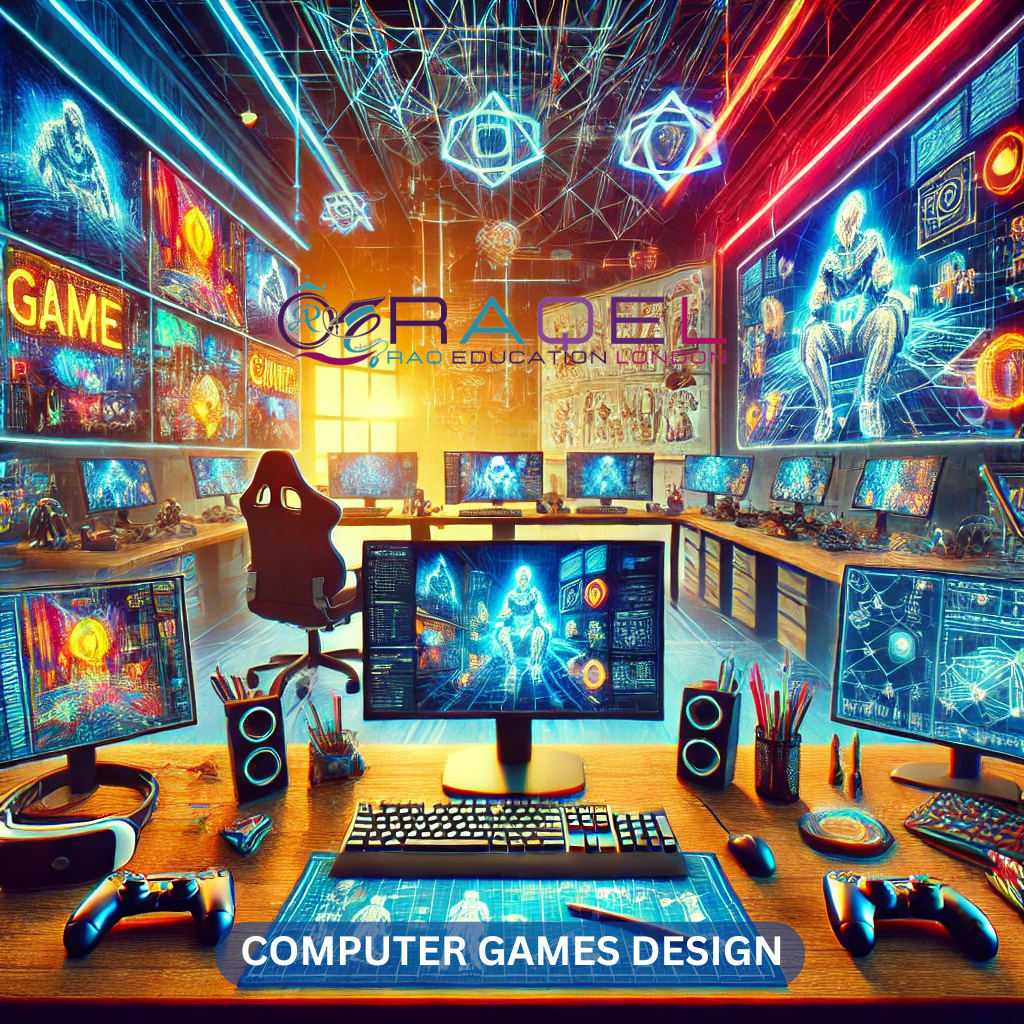
Exciting Game Design: Crafting Engaging Experiences
The Foundations of Game Design
Game design is an intricate discipline that combines creativity and technical acumen to produce engaging experiences. At its core, understanding player motivations is essential. Players are typically driven by various factors, including challenge, mastery, exploration, and social interaction. A successful game harnesses these motivations to retain player interest and foster an immersive experience.
Core mechanics refer to the essential actions and interactions that define gameplay. These can range from simple actions, such as jumping and running, to complex systems, like crafting or character progression. Game dynamics, which are the patterns of behavior that emerge during gameplay, evolve from these core mechanics and can significantly influence a player’s experience. For instance, games that incorporate strategic decision-making can elevate the sense of agency and make the gameplay more rewarding.
Storytelling is a critical component of game design, as it provides context and adds depth to the experience. A well-crafted narrative can motivate players to progress through a game, creating emotional connections with characters and events. Level design plays a vital role in enhancing storytelling by guiding players through environments that are thematically resonant and strategically structured. Effective level design also considers pacing and difficulty, ensuring that players remain challenged without feeling overwhelmed.
The user interface (UI) is another fundamental element that impacts player experience. An intuitive UI allows players to engage more fully with the game, minimizing frustration and breaking down barriers to enjoyment. Games such as “The Legend of Zelda: Breath of the Wild” and “Dark Souls” exemplify how these principles come together, utilizing compelling narratives, innovative mechanics, and immersive world design to captivate players.
In the landscape of game design, these foundational principles serve as the backbone for creating memorable experiences that resonate with players, encouraging exploration and emotional engagement.
Innovative Game Mechanics and Gameplay Elements
In the realm of game design, innovative gameplay mechanics and elements serve as crucial components that not only enhance player engagement but also shape the overall experience. One prominent category of mechanics includes puzzles, which often require players to think critically and solve challenges, instilling a sense of accomplishment when completed. For instance, games like “The Witness” have established themselves as exemplary models of integrating intricate puzzles that elevate the narrative and encourage exploration.
In addition to puzzles, challenges in gameplay can significantly influence a player’s motivation. These challenges may range from timed events to strategic resource management, demanding players to utilize their skills and adapt their strategies. A notable example is the “Dark Souls” series, where combat mechanics intertwine with challenging enemy encounters, fostering a rewarding sense of achievement upon overcoming difficult obstacles. This interplay can lead to a deeply immersive experience, as players find themselves invested in mastering the game’s various mechanics.
Moreover, combat systems hold a vital place in innovative game design. The evolution of combat mechanics—such as rhythm-based attacks or tactical team strategies—demonstrates how creativity can redefine player interaction. Games like “Hades,” with its dynamic combat system, have captivated audiences by incorporating real-time decision-making and skillful execution. Unique mechanics, such as environmental interactions and character abilities, contribute to differentiation within the competitive gaming landscape.
The impact of these innovative features on playability is profound. By introducing fresh gameplay mechanics and elements, developers can not only enhance player engagement but also ensure replayability through varying experiences. Case studies of successful games illustrate how effective implementation of innovative mechanics not only sets games apart from others but also resonates with players, providing immersive and memorable gameplay experiences.
Art and Aesthetics in Game Design
Art and aesthetics play a pivotal role in the realm of game design, influencing not only the visual appeal of a game but also the overall player experience. The choice of art style—be it realistic, cartoonish, or abstract—conveys the themes and emotions integral to the game’s narrative. Each artistic decision has the potential to immerse players within the game world, providing a context that resonates with their senses and emotions.
Character design is another crucial element of game aesthetics. Creatively crafted characters can evoke empathy and attachment, facilitating deeper engagement. Designers often leverage color, shape, and silhouette to depict the essence of a character’s personality and role within the game. For instance, a villainous figure might be illustrated with dark colors and jagged shapes, while a heroic character could leverage lighter hues and smooth contours. Such visual storytelling not only makes characters relatable but also serves to enhance players’ emotional investment in the unfolding narrative.
The creation of environments further enriches the visual landscape of a game, providing players with dynamic settings that affect gameplay. Designers must consider factors like lighting, texture, and structural design to create immersive worlds. The environment can reinforce themes, such as a desolate wasteland symbolizing despair or a vibrant forest suggesting hope. When combined with strategic sound design and music, the visual aesthetics create an integrated experience. Soundscapes—ranging from ambient sounds to thematic scores—amplify emotional responses and can signal in-game events, enriching the narrative and further engaging players.
Ultimately, the synergy between art, sound, and gameplay mechanics underscores the significance of visuals in shaping memorable and engaging experiences for players. By thoughtfully blending these elements, game designers can craft worlds that are not only visually stunning but emotionally resonant, heightening the players’ overall journey through the game.
Testing and Iteration: Fine-Tuning the Player Experience
In the realm of game design, testing and iteration play crucial roles in developing compelling and enjoyable gameplay experiences. The process of playtesting allows designers to gather invaluable feedback from players, which serves as a foundation for making essential modifications aimed at refining the overall gaming experience. Various methods can be employed to effectively gather this feedback, including direct observation, surveys, and interviews, creating a dialogue between developers and players that fosters a better understanding of player preferences and challenges.
Addressing balance and difficulty issues is another critical element of the testing phase. Players may encounter obstacles that impact their enjoyment and engagement with the game. Therefore, it is essential to consider diverse demographics during the design process, ensuring that all players, regardless of skill level or experience, can find satisfaction in the challenges presented. By focusing on accessibility, designers can better engage a broader audience, creating opportunities for various types of players to connect with the game.
Iteration is the lifeblood of effective game design, allowing developers to adapt and enhance their creations based on feedback from real players. Through continuous improvements, developers can strike the right balance between challenge and enjoyment, leading to a more polished overall experience. This process may involve adjusting game mechanics, difficulty levels, or even entire segments of gameplay based on player input. The ability to adapt and evolve is what sets successful games apart from their less engaging counterparts.
Ultimately, the goal of testing and iteration is to create a game that resonates with diverse player demographics, ensuring all players feel included and valued. By embracing a comprehensive approach that prioritizes feedback, accessibility, and iterative development, game designers can cultivate engaging experiences that not only captivate players but also foster a lasting connection to the gaming world.
𝐄𝐱𝐜𝐢𝐭𝐢𝐧𝐠 𝐆𝐚𝐦𝐞 𝐃𝐞𝐬𝐢𝐠𝐧 & 𝐀𝐫𝐭 𝐂𝐨𝐮𝐫𝐬𝐞𝐬 – 𝐅𝐞𝐛 𝟐𝟎𝟐𝟓 𝐚𝐭 𝐑𝐀𝐐 𝐄𝐝𝐮𝐜𝐚𝐭𝐢𝐨𝐧 𝐋𝐨𝐧𝐝𝐨𝐧! 🎨
Ready to break into the gaming industry? We’ve got exclusive courses for 𝐔𝐊/𝐄𝐔 𝐥𝐨𝐜𝐚𝐥 𝐬𝐭𝐮𝐝𝐞𝐧𝐭𝐬 students starting 𝐅𝐞𝐛𝐫𝐮𝐚𝐫𝐲 𝟐𝟎𝟐𝟓 𝐈𝐧𝐭𝐚𝐤𝐞 🎮
✨ 𝐂𝐨𝐦𝐩𝐮𝐭𝐞𝐫 𝐆𝐚𝐦𝐞𝐬 𝐀𝐫𝐭 & 𝐂𝐨𝐦𝐩𝐮𝐭𝐞𝐫 𝐆𝐚𝐦𝐞𝐬 𝐃𝐞𝐬𝐢𝐠𝐧
📌Hands-on with Unity, Unreal Engine, & 3D tools
📌Real-world projects & industry networking
📌Central London campus
📌Accredited by the University for the Creative Arts
💼 𝟏𝟎𝟎% 𝐅𝐑𝐄𝐄 𝐂𝐨𝐧𝐬𝐮𝐥𝐭𝐚𝐭𝐢𝐨𝐧
💷 𝐒𝐭𝐮𝐝𝐞𝐧𝐭 𝐅𝐢𝐧𝐚𝐧𝐜𝐞 𝐎𝐩𝐭𝐢𝐨𝐧𝐬 𝐀𝐯𝐚𝐢𝐥𝐚𝐛𝐥𝐞
✨ 𝐃𝐢𝐯𝐞𝐫𝐬𝐞 𝐛𝐚𝐜𝐤𝐠𝐫𝐨𝐮𝐧𝐝𝐬 𝐰𝐞𝐥𝐜𝐨𝐦𝐞!
📅 Classes on weekdays in Aldgate East
🌐 𝐀𝐩𝐩𝐥𝐲 𝐍𝐨𝐰 raqe.uk/apply-now
Tag:Game Design

 RAQ Education London
RAQ Education London